Nasal disproportion (a big nose and a small chin) is a common problem: every third person is not satisfied with his/her nose shape. The most easy and efficient method to enhance your appearance is a plastic surgery. Specialists of the plastic surgery clinics in Germany offer the whole range of operations, including rhinoplasty (“a nose job”, big nose shaping). The rhinoplasty (a nose surgery) requires a wide area of expertise. The German plastic surgeons provide the unsurpassed work and perform about 40 000 nose correction (including the reduction of a big nose) procedures annually, which is twice as many as their peers in Switzerland or France do.
The modern surgical techniques allow making nose smaller just in an hour. Aesthetic nose correction gives a unique opportunity to harmonize the face proportion and make you look more attractive. A prominent (long, big hooked or Roman) nose doesn’t always look aristocratic. The patients report that after the operation they felt more confident and happy.
What is rhinoplasty?
Each plastic surgery is a complicated process that includes two aspects: solving of aesthetical problems, and preservation or restoration of specific functions of the organ (in this case – nasal breathing).
Therefore, rhinoplasty can be made for both medical and aesthetic purposes. The optimal age for rhinoplasty is 25-35 years. However, this restriction can be avoided in some cases. Main medication indications for the surgery are as follows:
- Inborn deformation of the nasal septum.
- Polyps and enlargement of the nasal turbinate.
- Trauma and post-traumatic changes of bone and cartilage, physiological (conditioned by incorrect tissue development) or compensatory deflection of the nasal septum.
- Abnormal nasal breathing, or absence of it.
Pretty often, the main reasons of functional disorders and pathologies (complicated nasal breathing, enlargement or atrophy of nasal mucosa, rhinosinusitis, otitis, bronchial asthma, repeated respiratory diseases, snorting) are the changes of nose anatomical structure. Besides, such defects in children can cause brain oxygen deficiency, which slows down physical and mental development, and affects psychological development and behavior. Therefore, such operations can be performed before a child reaches 18 years.
However, in 60% of cases, rhinoplasty is made in patients who want to improve nose shape and their appearance. Plastic surgery is getting more popular. Aesthetic indications for the surgery are divided into two large groups:
- objective - disproportionate and unattractive nose size or shape;
- subjective, or psychological: there are no certain criteria of beauty, and each person can have his or her own stereotypes, which is why patients may not like their nose for some reasons.
These reasons often affect professional and personal relationships, make up for low self-esteem and feeling of dissatisfaction, and may even lead to social withdrawal, especially among women.
Rhinoplasty in aesthetic purposes is indicated when a person has:
- Disproportional nose size in relation to the entire face – too big, or too small nose.
- Inborn or acquired deformations.
- Deformation of the nasal septum.
- Broadened nostrils, a hump, two-pronged, asymmetrical, dropped, or raised nose end, or disproportion in relation to the height of the nasal arch, saddle shape.
- Non-satisfying results of the previous operations.
In many cases, medical and aesthetic indications correspond and are caused by the same anatomical defects.
What actually happens with rhinoplasty?
With invisible cuts on the inside of the nose, the cartilage and bone structure of the nose is prepared with precision surgery and changed in shape and size according to your ideas and wishes. For this, the plastic surgeon uses the finest instruments that have been specially developed for cartilage, bones and mucous membranes of the nose.
In most cases, a nose bridge that is too high must be reduced in size, the tip of the nose raised, the nostrils refined, or the skeleton narrowed. Lopsided noses often have a malposition of the nasal septum that can also hinder nasal breathing. The straightening of the nasal septum is also part of the operation of the nose job. In individual cases, additional tissue such as cartilage or bone must also be planned to compensate for saddle noses or other defects.
What results can be achieved with a nose job?
With a plastic nose correction, the shape and size are refined according to your ideas and brought into harmonic proportions to the other facial features. Nose bumps and oversized nostrils can be effectively reduced in size, a wide nose narrowed and a crooked nose straightened. The desired shape can be best modeled during rhinoplasty if there is a good bony and cartilaginous nasal structure and a normal nasal mucosa.
With pronounced crooked noses and saddle noses, cartilage or bone must be transplanted in individual cases in order to achieve good shape and function. Previous injuries or surgeries must be carefully considered when planning the desired nose job, as they could otherwise cause problems with the formation of the nose or the function of nasal breathing.
Coarse-pored and oily skin can hinder the formation of a fine tip of the nose, whereas very fine skin allows the contours of the bone and cartilage structure to be more clearly visible. The desired result can be achieved in most cases with modern plastic surgical methods. Small irregularities in the area of bone or cartilage corrections, which can result from internal adhesions, sometimes require a subsequent correction.
Form of anesthesia and hospitalization
Most nasal surgery is done under general anesthesia. However, some corrections are also possible under local anesthesia and general sedation. The operation takes one to two hours. The necessary preliminary examinations for anesthesia are usually carried out on the day before your surgery in the clinic. You also have the opportunity to discuss the anesthetic with the anesthetist. Depending on the procedure, a hospital stay of one to seven days can be expected.
How do I prepare for rhinoplasty / rhinoplasty?
You should avoid painkillers with acetylsalicylic acid (e.g. aspirin, ASA) as early as 14 days before the operation, as these delay blood clotting. You should also avoid alcohol and sleeping pills if possible. During the preliminary examination for nose correction, the function of breathing and the condition of the nasal mucous membranes are checked. For sensitive mucous membranes, it is advisable to use a nasal ointment such as Bepanthen or oily nose drops two to three weeks before the operation. Chronic inflammation in the area of the nose, throat and ears should be clarified and treated in good time.
Types of rhinoplasty
According to the aim and the surgical technique used, nasal plastic operations are divided into:
- Reconstructive – they serve to restore anatomical abnormalities that appeared due to incorrect fetus development, traumas, or diseases.
- Aesthetic – correction of drawbacks.
According to the same criteria, the following types of rhinoplasty exist:
- Enlargement or reduction of nose size.
- An evening of the nasal arch – correction of saddle shape, or a hump.
- Correction of the nose end.
- Correction of the nasal septum (septoplasty).
- Post-traumatic reconstruction.
All operations are divided into:
- primary;
- secondary, or repeated.
Methods of access
Depending on the methods of access variant, the nasal surgeries are divided into:
- Closed rhinoplasty, the cuts can be made within the nasal cavity. The closed access can be edge (along with the inner surfaces of the wings of the nose), intra-septum, or via the cartilage. After the cut, soft tissues are separated from cartilage and bones making up the structure, which allows performing all manipulations freely. This method is less traumatic in comparison with the open access and it eliminates the risk of artery damage and poor tissue nourishment, and post-surgery scars aren’t visible being located inside the nasal cavity. This method is used more often, especially for aesthetic operations.
- Open rhinoplasty — the cut is made along the columella (skin fold between the nostrils) and on the wings of the nose where they’re connected with the lip. This method is applied when the closed access cannot be used to solve the problem. Open access allows lifting soft tissues and cartilage up and making manipulations in the inner nose sections while preserving full visual control. Open rhinoplasty is used to correct serious deformations and performs technically challenging and time-consuming operations, for instance, serious nose deformations, especially with lateroposition; a combination of nasal deformation with developmental abnormalities, such as ‘hare lip’ or congenital cleft of the palate; reconstruction with use of implants. The main drawback of this approach is a post-surgical scar, as well as forced damage of columella arteries, which results into a serious and long-lasting post-surgical tissue swelling.
The operations are performed under general anesthesia and usually take 1-2 hours. Sometimes their duration reaches 3 and over hours.
Correction of nasal form
During the operation on widened nostrils, the skin in the lower part of the nostrils is being cut, and its excess is removed. Cut tissues are joined with stitches that are held for 5-7 days. Such invasion always leaves scars which are almost unnoticeable. In this case, if the nose is slightly flattened, augmentation rhinoplasty (lifting of the nasal bridge) is made. A similar operation is performed for a small or short nose. It’s called “grafting”. Patient’s cartilage or bones taken from other body parts serve as the frame. Most often, surgeons take bones from ribs, skull, or elbow, and cartilage – from the ear. In rare cases, synthetic materials are used, but they can be rejected by the body. Such operations are among the most complicated plastic surgeries, which is why they should be trusted to top surgeons only.
Surgery on the nose tip
During such operation, the form of the nose tip is improved. Most often, it’s done by the closed method: invasion affects cartilage and the soft tissues, and often – columella. Cartilage is cut, or excess tissues are removed from one place and moved to another. Most often, during the operation, the place above the tip is made thinner, while the tip of the nose is slightly protruded. Sometimes patients want to decrease the nose tip lengths, but such cases are rare. Together with such operation, patients also ask to change the nostril and columella form, as well as nose contours. If the operation presupposes alteration of the nose tip only, it’s simple, and recovery is pretty fast.
Contour plastics
Contour plastics is a very exquisite work during which the nose contour is slightly changed. Under the nose skin, surgeons make “pockets” where they inject implants or transplants. Today, this technology isn’t widespread, because bio gel injections are much simpler to use.
Laser rhinoplasty
During such operation, laser beams serve as a scalpel. This technology allows decreasing blood loss and accelerating recovery after the operation. Besides, working with cartilage is easier with a laser. Heated up by laser, the cartilage becomes softer and pliant. Laser cuts tissues seals vessels and eliminates bacteria. Under laser effect, recovery processes in tissues accelerate. Using a special laser device, surgeons can correct the nasal septum. There are methods that allow both eliminating aesthetic drawbacks and improving nose functions. The operation with a laser is the same as a traditional one. The operation can be closed or open. Cuts are usually made along the bridge and in the lower part of the nostrils. Sometimes, laser and a usual scalpel are combined during the operation. Such invasions are preferable since very fine cuts cannot be made with a usual laser, in comparison with the traditional approach. However, if the skin is cut by a laser, it recovers without scars. A cut is thin, it’s not bleeding, and cells are ready for recovery. Therefore, laser technologies are successfully applied in plastic surgery, including the operations for nose correction combined with usual surgical methods.
Reconstructive rhinoplasty
Reconstructive rhinoplasty is correction of nose form after a trauma or an inbuilt developmental defect. It’s impossible to predict which state the nasal frame has. Sometimes, reconstructive operations aimed at frame recovery presuppose taking cartilage right from patient’s ribs, ears, or nasal septum. The tissue grafts are taken from the patient’s body, and it doesn’t affect overall state or appearance. Reconstructive operations are usually made to restore normal appearance in case of upper palate or lip gaps. Sometimes, several operations are required. Besides, reconstructive surgeries are made after traumas that have caused the damage of bones and cartilage. In the most serious cases, surgeons work with patients who totally lost their nose. During the operations, microsurgical technologies are used that allow restoring normal patient’s appearance. One of the most widespread nose deformations surgeons deal with is saddle-shaped, or ‘boxer’s’ nose. This deformation can be caused by a strong punch into the nasal bridge, or infectious diseases of nasal cavity. In such case, the cartilage forming the bridge can be totally broken, and a surgeon needs to restore the cartilage bridge and nose frame. Such operation can last up to 6 hours. A patient is given the general anesthesia. Outside, only the area of columella is cut – all the other cuts are made within the nasal cavity. Therefore, all post-surgical scars aren’t visible. The operation affects all types of nose tissues: soft tissues, bones, and cartilage. After the operation, tampons are inserted to preserve the new nose shape and are left for 3-6 days. The plaster splint is removed in 5-12 days depending on the complexity of the operation. In a day after the operation, a patient can go home. In a week, a patients returns to have the stitches removed. During 8 weeks, patients aren’t recommended to wear glasses, and physical activity is prohibited during 2 weeks. In three weeks, the nose shape gets closer to the final results, and the further changes aren’t noticeable. However, the traces of operation disappear within 6-12 months. For a long time, a patient needs to be examined by the doctor.
Secondary rhinoplasty
Secondary nose plastics takes place only when a patient has already experienced surgical invasion in this area. Final formation of the nose ends within 6-12 months. This is the most optimal period for the secondary operation. It’s done in the following cases:
- the desired results cannot be reached within one stage;
- dissatisfaction with the results of the primary operation;
- the necessity to correct the problems that stayed after the primary operation.
According to global statistics, 25-30% of patients who have undergone the primary plastics need a secondary corrective operation. This is a normal case. As a rule, the operation takes up to 30 minutes and is made under the general anesthesia. Secondary correction rhinoplasty allows eliminating drawbacks of scarring and making nose shape satisfactory for both patient and the surgeon.
In case of primary low-quality plastic surgeries and the unsuccessful recovery period (which often depends on individual peculiarities), it’s harder to perform the secondary surgeries. Such operations require a better research and a more accurate preparation. This is fully-fledged plastic surgery made by some of the above-mentioned methods, but in fact, it’s much more complicated and may even to total deformation of the shape or part of the nose (for instance, nose tip), or the entire nose.
Complications and preparation to the operation
Nose rhinoplasty is considered to be one of the most complicated plastic surgeries: its result depends on surgeon’s experience. Complications happen in 4-15% of cases. They can take place during the operation (bleeding, skin tearing, separation of the mucus-cartilage part, damage of the bone frame, breaking of the bone section, etc), and after the surgery.
Secondary nasal surgery (rhinoplasty) is surgery after a failed first surgery by another pre-surgeon. In contrast to the revisions, the result is usually not fundamentally satisfactory and only requires a fine adjustment, but so blatantly disfiguring that confidence in the pre-operator has been lost and another operator is entrusted with the repair. These interventions are much more difficult in rhinoplasty than interventions on unoperated noses or fine adjustments on well-operated noses. They often require cartilage transplants e.g. from the ear or from the rib. It is nice that there is a wide range of options available for these patients to reconstruct aesthetically beautiful noses from love and devotion, some of which were catastrophic. Here it is often crucial not to choose the simple, small route for revision, but the strategy that is most likely to achieve a good result, even if the effort is greater. In particular with noses that have been operated on several times, it may also be the case that despite all love, effort, experience, care and talent, no perfection but only damage limitation can be achieved. Each subsequent operation (rhinoplasty) is more difficult than the previous one, since tissue is increasingly scarred, the circulation is poor and the healing process becomes more unpredictable.
Possible complications after rhinoplasty
- functional — atrophic rhinitis, a complication of nasal breathing, loss of sense of smell, temporary or permanent decreasing or loss of skin sensitiveness of nose and the upper lip;
- aesthetic — absence of changes, or worsening of the previous drawbacks;
- psychological — patient’s dissatisfaction with the results of the plastic surgery;
- infectious — long-lasting swelling and irritation, purulency;
- pigmentation of the skin, the formation of the vascular tree, synechia of mucous membrane, and huge scars;
- periodic nasal bleeding, necrosis of soft tissues and cartilage.
Preparation includes:
- Consultation of the plastic surgeon during which the technical possibilities and patient’s preferences are defined.
- General tests — clinical and biochemical analyses of blood, research of blood coagulation, general urine analysis, hepatitis tests, HIV, syphilis (RW), electrocardiogram.
- Special research (if needed) – images of the maxillary sinus, endoscopic research of the nasal cavity to reveal corresponding abnormalities and pathological changes.
- Computer modeling that allows comparing the initial state of the nose with the planned results of the future rhinoplasty.
- Consultation with the therapist and specialists (if there are chronic diseases).
- Examination of anesthesiologist after the tests.
- 2 weeks prior to operation, the patient shouldn’t take medications that alter the process of blood coagulation - acetylsalicylic acid and its analogs, anticoagulants.
- Cessation of use of sedative and sleeping medications on the day of operation.
Contraindications and rehabilitation
Absolute contraindications to rhinoplasty
- Chronic diseases in their heavy form (endocrine, cardiovascular, pneumonia, etc).
- Acute infectious diseases.
- Disorders of blood coagulation.
- Menstruation.
Rehabilitation after rhinoplasty
General recovery after rhinoplasty takes up to 3 weeks. However, the final period of rehabilitation period when the results are evaluated by the doctor begins in 6-12 months. During this period, certain restrictions should be followed.
In 1-1.5 weeks after the surgery, the plaster splint and stitches are taken off. During the first two weeks, hot bath and washing in hot water are prohibited, because it may cause bleeding, hematoma and swelling spreading all over the face and neck. A person should sleep on his or her back in the uplifted posture, which improved breathing and reduces swelling. In dusty places, a person should wear a protective mask. Bending and weightlifting isn’t recommended.
During next 3 months, a person shouldn’t wear glasses and heavy caps. Swimming pools and sunbathing is prohibited for 3 months. A patient should use an umbrella or a hat with wide flaps during hot weather and in the sun.
When planning the variants of rhinoplasty, an experienced surgeon sticks to three kinds of limitations: limitations defined by the surgeon, limitations stated by the patient, and the limitations connected with patient’s overall health and anatomical peculiarities of the nose.




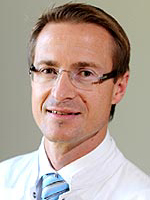



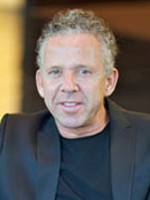
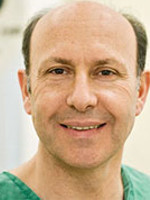


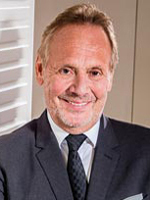

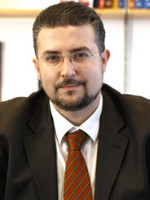
.jpg)
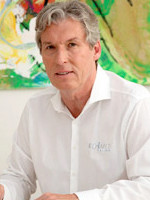
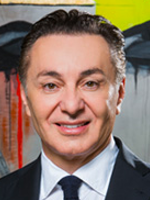



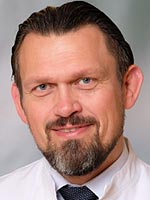






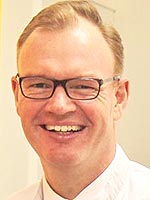








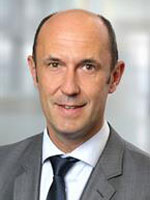
 Loading ...
Loading ...


